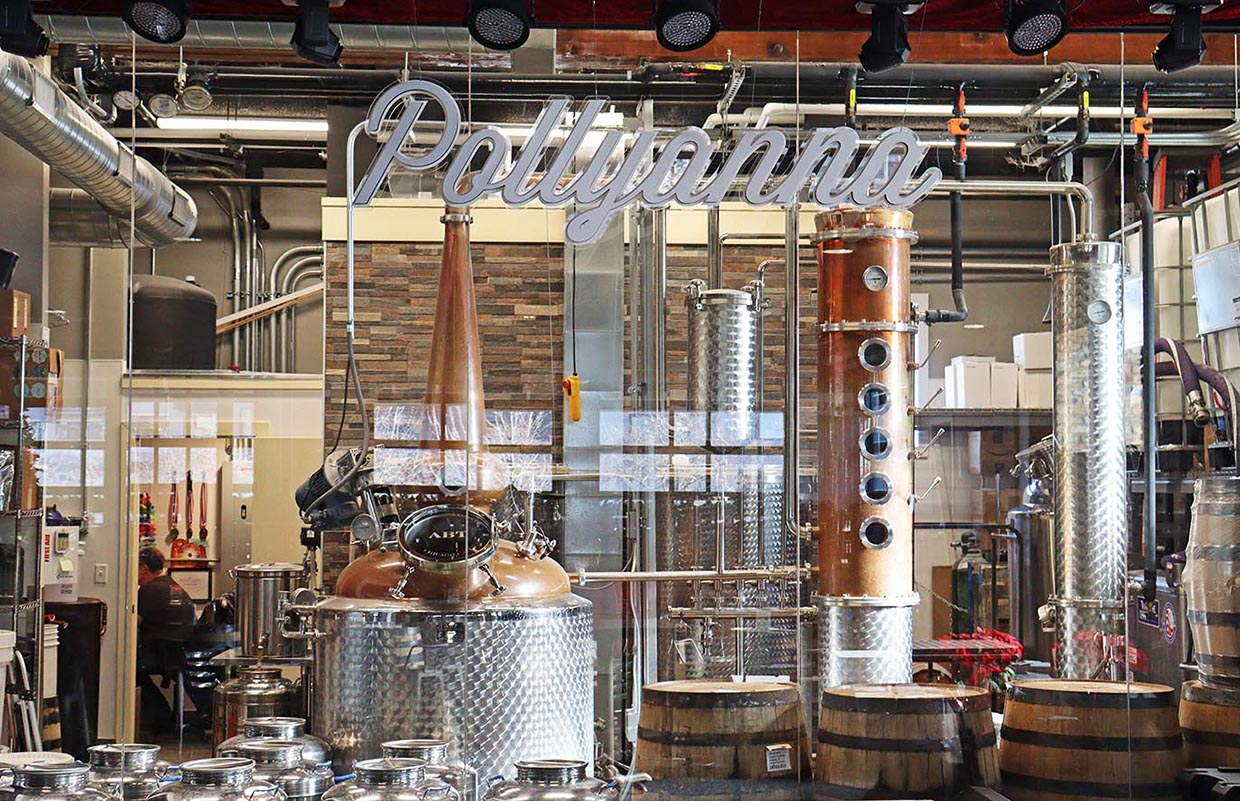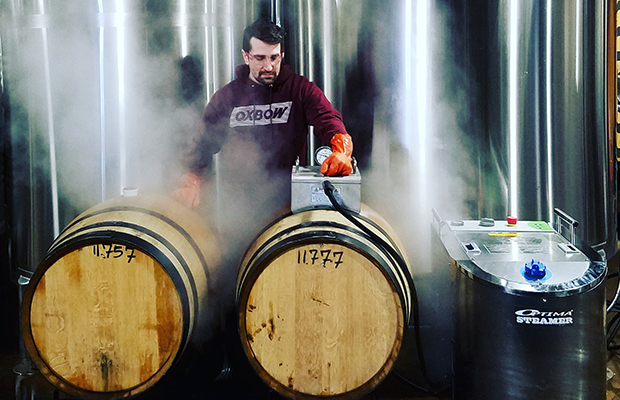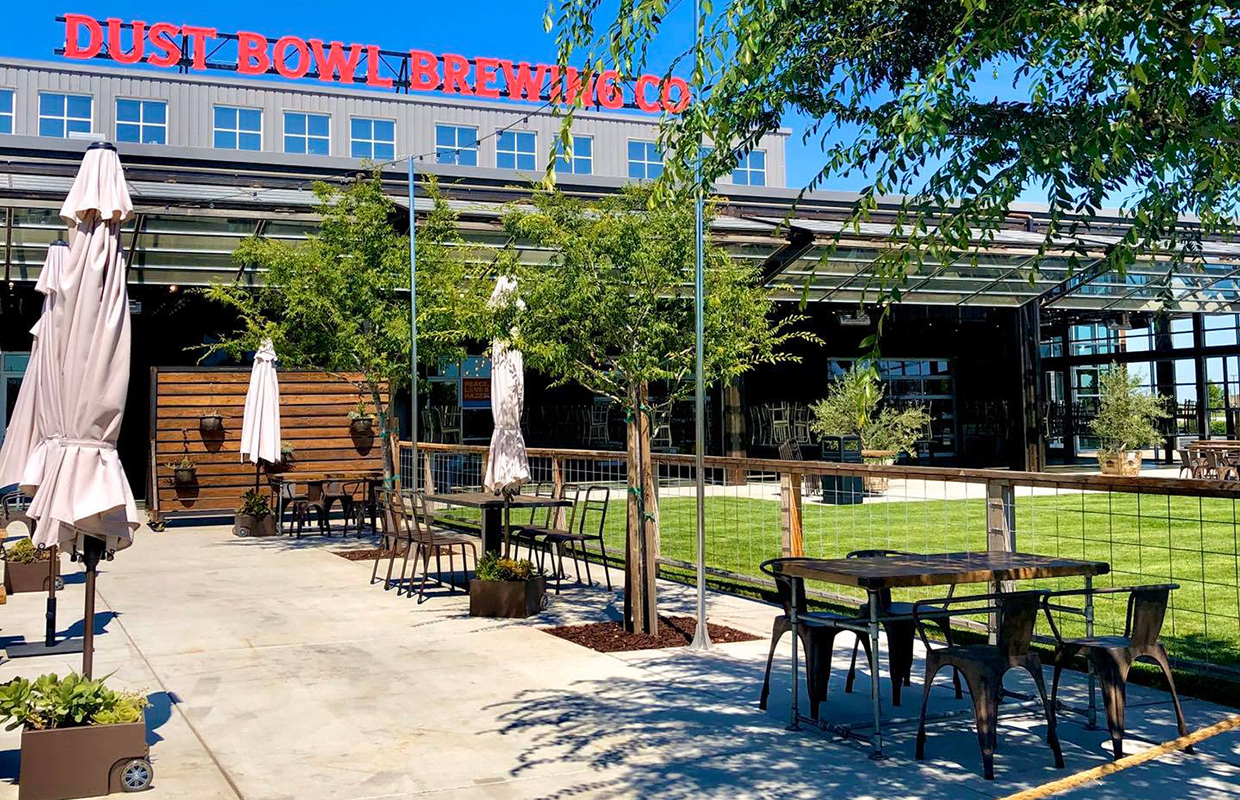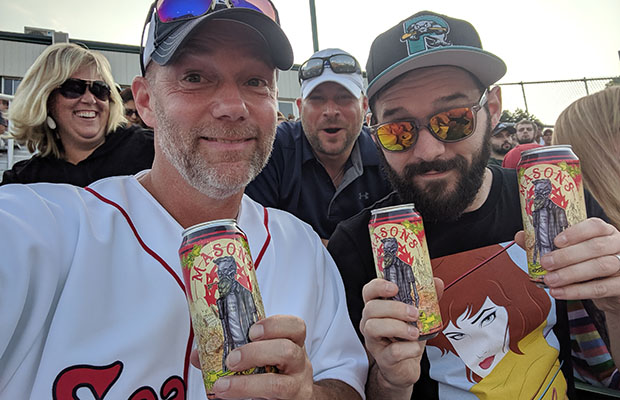
A brewery can attack the word diversification in many ways. Depending on location, laws, consumer base, and more, a brewery owner can help choose a direction that can make their brewery stand out in a crowded field.
From the start, Interboro wanted to do both beer and spirits, explained Laura Dierks, founder, and CEO of the Brooklyn company.
“We knew we had to make beer to make spirits, so it was part of our business plan from the beginning,” she told Brewer. “The broader portfolio gives us a broader audience and more relevancy, and products with a longer shelf life.
“The relevancy of good whiskey is generational and is a longer game we wanted to play.”
There is extensive shared equipment and knowledge needed to make both, Dierks said.
“And brewers are great distillers — they’re technicians who know both how to create and importantly, how to avoid certain chemistry,” she said. “All the knowledge needed to make great spirits lives in brewers’ minds. Some of those compounds to avoid are exactly what makes today’s distillate into great whiskey after the aging process.”
For Cahaba Brewing, adding spirits to its company broadened the community aspect, explained Production Manager Cat Golden.
“While it’s hard for me to imagine why the fact remains that not everyone drinks beer,” she said. “Distilling has also opened up the opportunity for us to explore hyper-local ingredients — varieties of corn, specifically — that wouldn’t normally play as large of a role in our beers.”
Cahaba has found there to be a great deal of crossover in customers in Alabama.
“Many folks who appreciate the artisanal nature of craft beer also appreciate creative, thoughtful, hand-crafted products, in general,” Golden said. “Some of our most loyal beer patrons will be the first to line up to purchase our newest bourbon releases.
“On the other hand, we’ve also built a local following of whiskey drinkers who come to the brewery specifically to enjoy our spirits — but who will sneak in a beer or two while they’re here. We especially love that many of these patrons are women who are whiskey connoisseurs.”
Pollyanna Brewing came upon distilling as a way to make the Chicago suburb company standout while looking to open a third location, which includes a brewpub and music venue in St. Charles, Illinois.
“We had our eyes out for anything that might open up in St. Charles,” explained co-founder Ed Malnar. “We found a building in downtown St. Charles and by the time we did that, we realized that there were other breweries there that were either here already, or they were just getting ready to open or they were in planning.
“The thought was how do we differentiate ourselves from the other breweries that are here? That way we can avoid stepping on their toes and overall it will provide a different experience to customers. I suggested to my partners, why don’t we make it a distillery instead of a brewery? We were going to be able to have our beer here anyway so why don’t we put in a distillery, everybody loved the idea.”
Starting on a small scale was the thought process, but Malnar echoed many brewery owners after 18 months of opening a location that they probably could have started bigger. Always a good problem to have.
“I designed the space with a lot of flexibility,” he said. “We utilize (well) but it sure would be nice to have a pretty much a set bottling area rather than having to set it up or break it down every time we want to bottle. Then of course storage space: Finished spirits in bottles, they can’t just sit around, they gotta go somewhere. Same thing with barrels.
“We’ve got an offsite warehouse where all that stuff goes.
Pollyanna started with a still, a mash tun, and a few fermenters in 800 square feet.
“In our case, because I had such little square footage, I had no space for a steam boiler, which would have been ideal,” Malnar said. “Our budget was somewhat limited, so I couldn’t necessarily afford a steam boiler anyway. So we had to go all-electric, which meant bringing in additional service to the buildings specifically for this production area here.
“The other thing is you never seem to have enough tank space. So more blending tanks would be better. I started with two and I added a third. I could certainly use probably two or three more. Tanks space … and having that flexibility to keep it, to divide it up depending on what you’re going to do with the spirit, is a nice option.”
Dierks said Interboro invested in its copper still, on top of all the stainless steel brewing equipment. Space to store barrels longer term is important as well, she added.
“Training, on things like accurate dilution and still safety, become additional needs,” she said. “And of course, there need to be lots of planning for long-lead aging products.”
In Alabama, Golden said Cahaba is not required to have a separate area or facility to house its distillery.
“This flexibility led to huge cost savings, as our distillery can use the brewery’s stainless fermentation vessels when needed,” she said. “We recently invested in a much larger still, and we were able to simply drop in another steam line between the boiler and the HLT. I can only imagine what it would have cost to run piping into a completely different area of our facility.
“On the other hand, distilling our specific line of spirits necessitates a significant expenditure that is purely optional for breweries: oak. Unlike stainless kegs, cooperage in a spirits program is perishable and requires a plan for end-of-life. This is a huge investment.”
Another major crossroad is determining employees and how job duties for production will be split up.
Interboro has tried both ways, Dierks said.
“We hired distillers and trained them as brewers, had dedicated distillation people, and now have a ‘brewer/ distiller’ position where employees are trained to do both,” she said. “We’ve found that to be the best solution so far.”
Cahaba hired its head distiller a full year before the distilling equipment even arrived. Since that time, Golden said they have brought an assistant distiller on board and have increased its distilling capacity dramatically.
In Alabama, as a business with an alcohol manufacturer’s license — as opposed to a brewpub license — Cahaba is legally required to make every drop of alcohol that is served in its taproom. As for state licensing, both the brewing and distilling licenses are wrapped into a single manufacturer’s license.
“The challenge with this is that we must be hyper-focused on following the law to a ‘T’ at all times, or we risk losing both licenses simultaneously — regardless of whether violations were solely on the spirits side, or vice-versa,” Golden said. “Our entire license to manufacture alcohol could be revoked. There’s a lot at stake, so you’d better believe we’re very careful to make informed decisions at every turn.”
Dierks said you need very good recordkeeping because, from the licensing standpoint in New York, you have to track both the beer and the spirits separately.
“Internally, whiskey is WIP, ‘work in progress,’ for a long time, so we have to track where those costs go,” she said. “Externally, the TTB requires twice-a-month distilling reports versus quarterly for brewers reports.”
Cahaba sources many of the raw materials used in the distillery from the same suppliers they use for the brewery. However, for moonshine products and bourbon — which are heavily corn-focused — Golden said they can look closer to home.
“The corn for those products is grown exclusively in Alabama,” she said. “In fact, a large portion of that corn is grown by Justin Waits of JKW Cattle Company, one of the farmers who picks up our spent grain each week for his livestock.
“We consider ourselves very fortunate to have such a mutually beneficial relationship with Justin.“
Interboro uses all of the same vendors as well, which Dierks said is a bonus.
“Even our barrels are often sourced via the same companies,” she explained. “It’s been a benefit for these types of materials.
“Other things, like sourcing sacks of juniper for our gin — well, it’s just another thing to find a good vendor for.”
Another aspect, especially when adding a spirits program after being established as a craft brewery, is naming.
For Pollyanna, adding the word “distillery” to its St. Charles location after opening means still getting the word out that the brewpub/music venue isn’t just for craft beer fans.
“Honestly, it’s kind of a double-edged sword,” Malnar said. “Because we are known as a brewery, the majority of our customers are beer people. And the majority of our staff are our beer people. If we started out as a distillery, or if we decided to make this distillery a separate entity all by itself, it’d be quite different because then we’ve got only just spirits people to talk to. We are marketing directly to them and we have the attention of spirits people.
“As it is right now, we’ve got beer people that we’re trying to get interested in spirits. So on one hand, yeah, the brand was already there. People knew us because of the beer. And that, hopefully, translated into, hey, they produce really great beer, they’re probably going to produce really great spirits, too. I think that’s what we’re doing here, in my opinion, and seems to be going well. But the challenge is, okay, do people think of us as a brewery, not a distillery? It’s hard to tell exactly if that is something that helps us or if it’s a hindrance, I can’t really tell.”
Photos courtesy Interboro Spirits & Pollyanna Brewing & Distilling




Be the first to comment